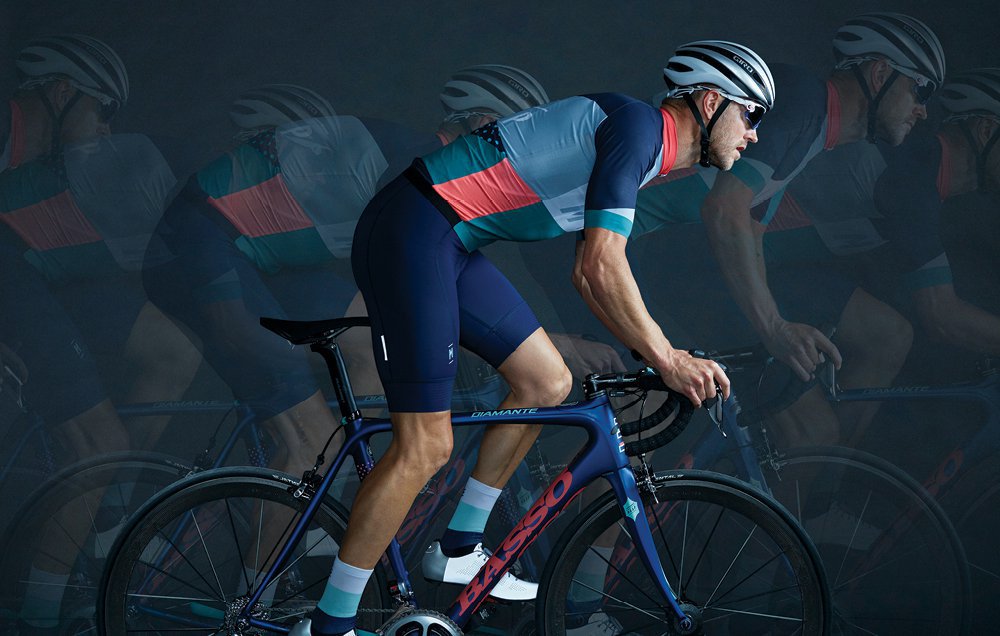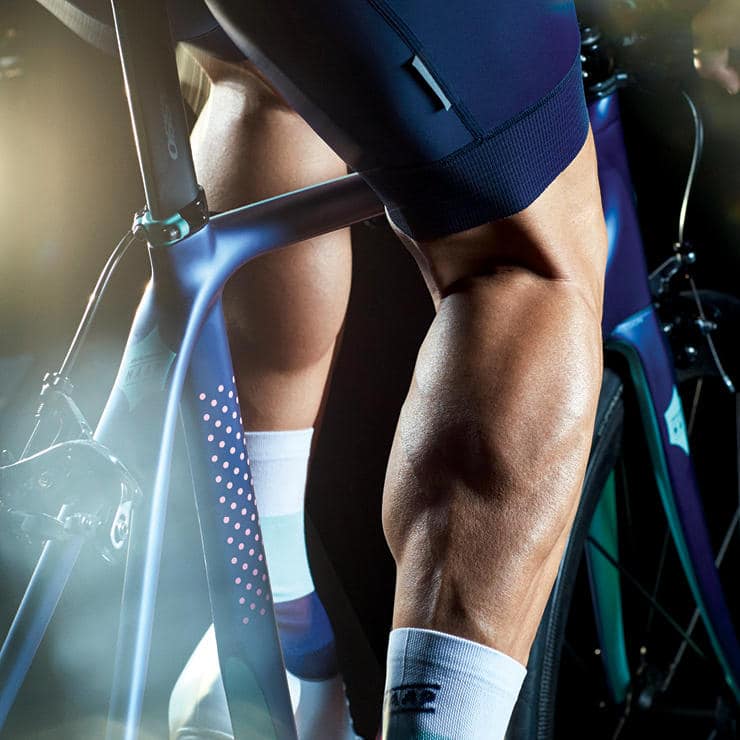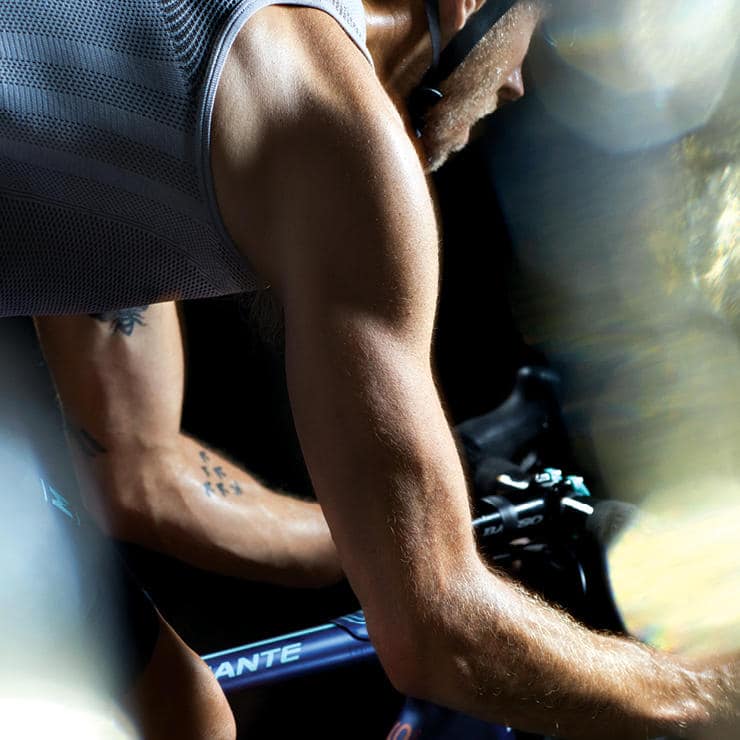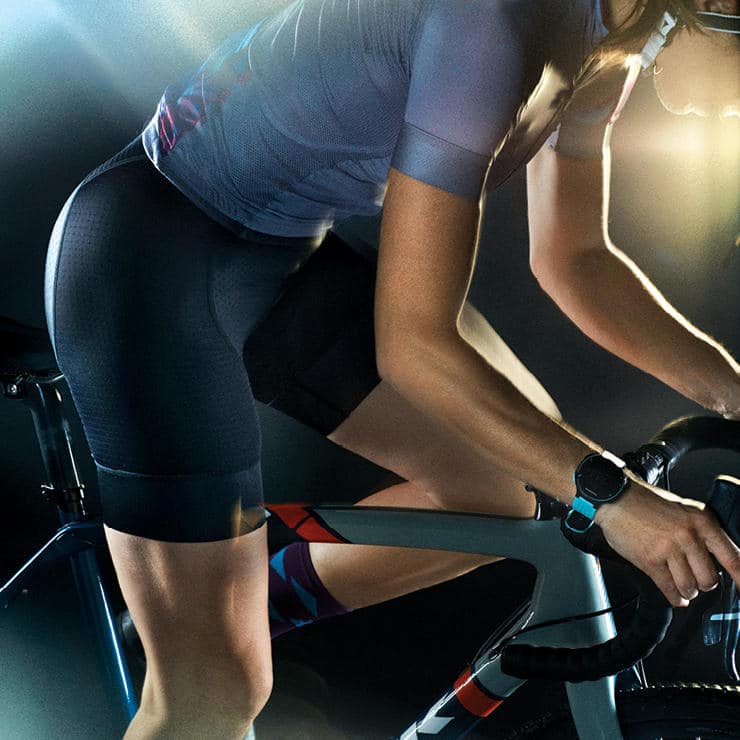This Is Your Body During A Ride
Your body isn’t a temple, it’s a machine.
Your body isn’t a temple, it’s a machine. – By AC Shilton

It’s not just any machine, though. It’s the world’s most complex super-computer; a thing of baffling intricacy, with inner-workings so complex scientists still puzzle over pieces of it. And if you’ve ever wondered what’s really going on with it as you ride, here’s your moment-by-moment guide to the beast within.

Thanks to your brain’s ability to remember pleasure, just catching a glimpse of your bike can make you happy.
Recalling how awesome you felt the last time you got out lights up a section of your brain that’s responsible for, among other things, regulating emotions and behavior. Thinking about a great ride stimulates the same brain cells that are activated when you’re pedaling, says John Ratey, MD, associate clinical professor of psychiatry at Harvard Medical School.
Of course, not every moment of every ride is bliss (looking at you, 18 per cent grade). Luckily, exercise produces mood-boosting, painkilling chemicals called endorphins, which your body learns to crave. An article published in the journal Social Research suggests that it’s possible to desire a reward, such as a ride-induced endorphin rush, without enjoying the process of achieving it (those leg-busting intervals).

Start pedaling and everything changes. “It’s instantaneous,” says Eric Sternlicht, PhD, associate professor of kinesiology at Chapman University in Orange, California, and an avid cyclist.
Your brain switches into fight-or-flight mode, trying to decide whether the sudden increase in effort is because you’re tooling around the neighborhood or being chased by a wild boar—a throwback to our hunter-gatherer days. This triggers vasoconstriction, says Sternlicht, meaning that your body shifts blood away from nonessential body parts and shuttles it to the heart and brain. In the event this is a boar attack, your brain has to calculate the safest place to run to, and your heart needs blood so it can distribute it to your legs (if you opt to flee) or fists (if you decide to fight).
This is also why it’s important to go at a warm-up pace for the first 10 or so minutes. If you try to go crazy hard too soon, you’ll have very little blood (and oxygen) in your legs to help you. Once your brain has sorted which muscles need blood, your heart will dish out what it’s got. Until then, however, cranking up the wattage will lead to misery.

If you’re sufficiently warmed up, your body begins to usher blood back into the muscles, says Sternlicht. “The muscles begin to use fuel more appropriately, too,” he says.
In the first minute or two your muscles work anaerobically, meaning that they start scarfing down the body’s stored fuel (called glycogen) without using oxygen. Unfortunately, this process produces pain-inducing feelings, and lactic acid. As you warm up, enzymes get to work that help your muscles access the glycogen aerobically (with oxygen), which doesn’t create lactic acid. The anaerobic process is quicker, making it ideal for hard efforts. But you can work anaerobically for only a short period of time before your legs begin to beg for mercy.

As gravity tugs at your back wheel, the amount of power you need to maintain momentum increases. This means your muscles start recruiting additional fast-twitch fibers (the kind that produce more power). The more oxygen your muscles scream for, the harder your heart and lungs must work to deliver the blood that carries it.
And when Fast Friend kicks the pace up to “full suffering,” your muscles may require fuel faster than your heart can send the oxygen they need to create it. “When you start exercising, the volume of blood pumped out with each heartbeat increases,” says Stacy Sims, PhD, a senior research fellow at the University of Waikato in Mount Maunganui, New Zealand, “but as you hit higher intensities, the stroke volume plateaus.” In other words, you’re officially anaerobic.
When your muscles use fuel without oxygen, lactic acid is formed in the process. This isn’t always a bad thing—the lore about lactic acid being responsible for postexercise soreness turns out to be bunk. But when you produce lactic acid faster than your liver can deal with it, things get ugly. “It drops the pH of the muscle fiber, which then stops functioning as effectively,” says Sternlicht. “So you’re forced to recruit other muscle fibers.” That burn in your legs happens when excess lactic acid is forced to squeeze into the nerve-rich space between the cells and bloodstream.
As the pitch steepens, you’ll also feel your core engage. Core muscles—abs, back, and obliques, the ones that run along the sides of your midsection—are your stabilisers, says Sternlicht. Strengthen them, and you’ll pedal with less wasted motion so that more of your leg power can go toward pushing you forward.

The smile spreading over your face as gravity rewards you is just one of the many things your body is doing.
As you begin to coast, your breathing and heart rate slow. Your fitness determines how fast this happens, since the fitter you are the more efficiently your systems run, says Sternlicht. A strong heart can pump more blood with each stroke to ensure that your cells get the oxygen they need and to help move waste products out of the cells and into sweat or urine.
This is why you might not want to stop moving. Easy pedaling keeps blood pumping from the heart to the legs and helps shuttle lactic acid into the liver to be converted into glucose. When you get to the next hill, you’ll feel better if you’ve kept things in motion.
While your legs might be enjoying some downtime, your head is still in high gear. Dealing with a range of stimuli (Pothole! Dassie!) on descents, or any time during your ride, forces your brain to work harder. And the brain is like a muscle—the more you work it, the stronger it gets. Exercise can also boost the brain’s ability to form new communication channels.
“New pathways can heighten your ability to focus, your concentration, and your ability to remember things,” says Chelsi Day, PsyD, director of counseling and sports psychology for athletics at Indiana University.

Stop for a midride coffee, and you’ll have to start the whole warm-up process again. But the ritual comes with some benefits, says Sims.
Caffeine helps your body burn fat, so your carbohydrate stores last longer. The buzz also helps downplay fatigue, so you feel better, she adds. The optimal dose depends on your weight (and your caffeine tolerance), but Sims says just 60 milligrams—the amount in a shot of espresso—will give most athletes a noticeable boost.
Also, don’t worry about coffee dehydrating you. It’s not actually a diuretic, says Sternlicht. It may, however, send you to the bathroom for another reason: “It relaxes some of the smooth muscle in your digestive and urinary tracts.

As Fast Friend gets out of the saddle on the approach to the county line, you don’t want to start your chase too early. In a sprint “you recruit mostly fast-twitch muscle fibers, which can generate a lot of power but don’t last long,” says Sternlicht. “You’ve got about 10 to 12 seconds of max effort.”
In an all-out sprint, you’re not accessing stored energy for fuel, but instead gobbling up the immediate fuel that exists in the muscle. When it’s gone (which takes a matter of seconds), you’re toast.
The good news is that a single 10-second sprint won’t kill your legs for the rest of the ride. The same processes that allowed you to rally after that big climb will help you recover on the fly, and the more you’ve trained, the faster you’ll bounce back. You’ll probably get an adrenaline rush too; to maximise uptake of the chemical, Sims suggests pedaling easy for a moment after you feel that surge of “Go!” juice.
If the sprint didn’t go as planned, don’t sweat it. “I tell my athletes, ‘The negativity monster is always lurking, but you can make a conscious decision to not go there,’” says Day. Just thinking negative thoughts can zap your muscular strength, although scientists still don’t completely know why, she says.
So the second you feel doubts about your abilities, shift your focus to things you can control: Can you hydrate? Take in fuel? Sit on a friend’s wheel for a few minutes?
Next, break up your ride into digestible bites. Say, “I know I can make it five more kilometers,” then reevaluate at that point, says Day. Almost always you’ll find yourself feeling better and ready to go a little longer.

It starts as a little twitch. Then it gets a little bigger. Then, bam: Your entire quad seizes. You may be dehydrated, you may be low on electrolytes, but here’s the thing: Neither of these situations is causing that cramp. Scientists still don’t know definitively what triggers them, but the most research-backed method for dealing with a cramp is to stop and stretch, which seems to work as a reset button on the nervous system.
Pickle juice may also work. For years, researchers thought that the brine relieved cramps because of its salt content, but a study published in Medicine & Science in Sports & Exercise found that cramps abated just 85 seconds after subjects ingested the green liquid—before the salt could have entered the bloodstream. The current hypothesis is that the pungency of the pickle juice triggers a reaction in nerves in your throat, which, in turn, tells the central nervous system to stop contracting the offending muscle.

I hate this road. I hate this bike. I hate my riding partner’s mouth breathing.
Sound familiar? It’s the universal bonk theme song, and if you ignore its dissonant tune, by the third verse your legs will be too weak to turn the pedals.
“A bonk happens when you’ve depleted your muscles of 80 per cent of their glycogen stores and your brain says ‘I’m done,’” says Sternlicht. You’re not actually out of fuel yet, but your brain is shifting into self-preservation mode, he says. Technically your muscles could go on, but good luck making that happen.
The only way to bust out of this misery is to get some sugar into your system. The good news is that as soon as a sweet taste hits your mouth, you’ll start to feel better. A growing body of research has found that the simple act of swishing a carbohydrate solution around in your mouth can help you exercise longer and enhance power output, even before any of that sugar is absorbed. Once you swallow, Sternlicht says that it will take about 10 to 15 minutes for the glucose to actually enter your bloodstream.

The entire time you’ve been riding, your body has been producing a range of chemicals that block feelings of pain, says Ratey. When you stop, the pain the chemicals were working to block is gone, but your brain keeps producing them. The result is a feeling of euphoria—often called a runner’s or cyclist’s high.
If you’re not hearing angels sing, try ending on an easy note next time. A 2016 study in the Journal of Sport and Exercise Psychology found that when riders slowly decreased intensity during a workout, they remembered the session as being more pleasant than those who started easy and finished in a sprint.
Whichever approach you choose, grab a snack when you’re finished—otherwise your body will pillage from the muscles you hoped to be building. “You should take in carbs and protein within one hour of finishing exercise,” says Sternlicht. Aim for 50 to 70 grams of carbohydrate and 15 to 25 grams of protein, about what you’d get from a cup of cooked oatmeal with ½ cup fruit and 1½ cups of milk.
For the next 4 to 6 hours your muscles will be repairing and rebuilding themselves to come back even stronger, he says. This boosts your metabolism because your cells require more oxygen as they repair. The amount of time your metabolism stays elevated depends on the length and intensity of your ride, and women tend to come back to baseline faster than men, says Sims. For serious efforts, it may be several hours; after an epic throw down the calorie-torching effects may last a few days.

Odds are you’ll wake up rested because regular exercise has been shown to boost sleep length and quality. Depending on how hard you rode, your body may still be recovering.
This, however, is not an excuse to loaf around. Muscle contractions help move blood to areas where cells have been damaged. Body parts that were stressed the most during exercise (think your quads and glutes) will have the most wear and tear, and thus will require the most blood flow.
Sternlicht says you’re almost always better off pedaling easy for 20 minutes than binging on Netflix, and proper hydration and nutrition is important too. “Remember, we don’t gain fitness during the workout,” he says. Improvements come postride, as long as your body gets the fuel and rest it needs.
Plus, by now the mental benefits from yesterday’s ride have worn off. Which means you’re craving another endorphin hit. The best way to get your fix: Kit up, get out, and ride.
READ MORE ON: Skills strength training programmes workouts

